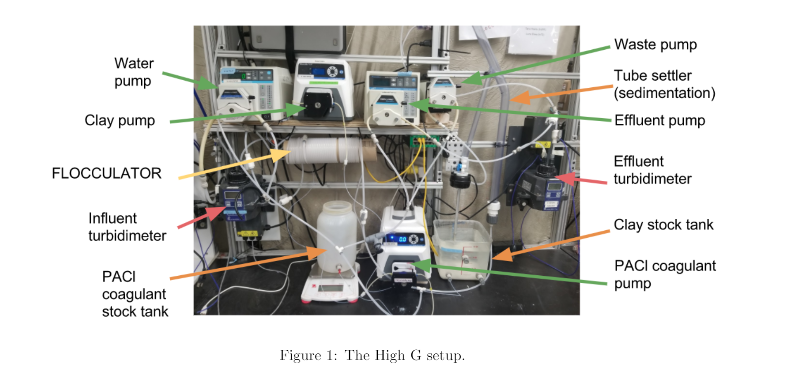Roswell Lo, Tanvi Naidu, Luna Oiwa
Abstract:
The High G Flocculation team this semester designed an experimental set-up to test the effects of velocity gradient (G) in a flocculator and to determine the optimal G value based on flocculator performance in terms of effluent turbidity. The G value was varied in different trials by varying flocculator flow rate while controlling for coagulant dosage, influent turbidity, flocculation tube length, and upflow velocity through the sedimentation tank. G_theta was kept constant as around 20,000. The constant sedimentation tank upflow velocity was achieved using a waste stream between the flocculator outlet and sedimentation tank. It was found that for a standard coagulant dose, lower G values were associated with lower effluent turbidity, with 100 Hz being the lowest value tested. The same general relationship was observed for a higher coagulant dose, except that the lowest G values resulted in higher effluent turbidity due to floc blanket collapse. Data from this study will be used in the future to inform the geometry of the flocculator, i.e. the optimal distance between baffles in a full-scale water treatment plant.

